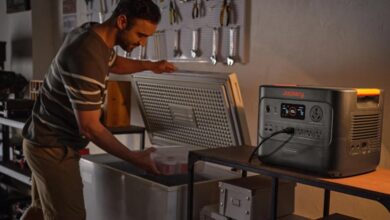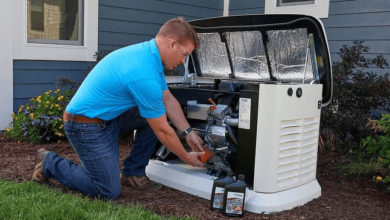Integrating Heat Pumps with Solar Energy Systems

As the demand for renewable energy grows, homeowners are increasingly seeking ways to combine sustainable technologies for maximum efficiency and cost savings. Integrating heat pumps with solar energy systems is one of the most effective strategies to achieve a comfortable, energy-efficient, and eco-friendly home. These two technologies complement each other, creating a synergy that drastically reduces reliance on fossil fuels and lowers utility costs.
This article explores how heat pumps and solar energy systems work together, the benefits of their integration, and how homeowners can make the most of this powerful pairing.
Why Heat Pumps and Solar Make a Perfect Pair
Heat pumps, including air source and electric heat pumps, are designed to transfer heat rather than generate it, making them highly efficient. On the other hand, solar panels capture sunlight and convert it into electricity. By combining these systems, you can power your heat pump with clean, renewable energy, maximizing sustainability and savings.
How the Integration Works
- Power Generation: Solar panels produce electricity, which can be used to run the heat pump.
- Energy Storage: Any excess electricity generated during the day can be stored in batteries for use at night or during cloudy periods.
- Year-Round Efficiency: Solar panels generate power even during the cooler months, ensuring your heat pump can operate efficiently year-round.
See also: A Comprehensive Guide to Siding for Homeowners and DIY Enthusiasts
Benefits of Pairing Heat Pumps with Solar Panels
Integrating heat pumps with solar energy systems offers numerous advantages, ranging from financial savings to environmental benefits.
1. Lower Energy Bills
By using solar-generated electricity to power your heat pump, you reduce your dependence on the grid, leading to significant savings on energy costs. Over time, this reduction in utility expenses can offset the initial investment in the system.
2. Reduced Carbon Footprint
Heat pumps already lower emissions by eliminating the need for fossil fuels. When powered by solar energy, they become a zero-emission heating and cooling solution, supporting global sustainability efforts.
3. Increased Energy Independence
Generating your own electricity allows you to rely less on the grid, shielding you from rising energy prices and power outages. This is especially beneficial in areas prone to unstable energy supplies.
4. Improved Home Value
Homes equipped with renewable energy systems and energy-efficient heating and cooling solutions are highly desirable in the real estate market. Integrating a heat pump with solar panels can enhance your property’s appeal and resale value.
Choosing the Right Heat Pump for Solar Integration
Not all heat pumps are equally suited for integration with solar energy systems. To achieve the best results, consider the following factors:
1. Energy Efficiency
Select a heat pump with high SEER (Seasonal Energy Efficiency Ratio) and HSPF (Heating Seasonal Performance Factor) ratings. These metrics indicate how efficiently the system operates, ensuring you get the most out of your solar energy.
2. Smart Compatibility
Opt for a heat pump that integrates with smart home systems. Smart thermostats and energy management tools allow you to optimize the use of solar energy, ensuring the heat pump operates when the panels generate the most power.
3. Cold Climate Performance
In colder regions, look for heat pumps designed for low-temperature operation. These systems ensure consistent heating during winter, even when sunlight is limited.
Designing a Solar-Powered Heat Pump System
Integrating heat pumps with solar panels requires careful planning to ensure the system meets your home’s energy needs.
Step 1: Assess Your Home’s Energy Usage
Analyze your household’s energy consumption to determine the size of the solar panel system required to power the heat pump and other appliances.
Step 2: Optimize Insulation
Improve your home’s insulation and seal air leaks to minimize heat loss. This reduces the workload on the heat pump and ensures energy generated by the solar panels is used efficiently.
Step 3: Determine System Size
Work with a professional to calculate the number of solar panels needed based on your home’s location, climate, and energy demands. A typical residential solar array consists of 20–25 panels, but this can vary based on individual requirements.
Step 4: Add Energy Storage
Consider incorporating a battery system to store excess energy for nighttime use or periods of low sunlight. This ensures your heat pump can operate consistently, even when solar production is low.
The Role of Foundry Heat Pumps in Solar Integration
As a leading provider of heat pump solutions, Foundry Heat Pumps specializes in systems designed for optimal energy efficiency and sustainability. Whether you’re retrofitting an existing home or designing a new one, their team ensures seamless integration of heat pumps with solar energy systems.
Expertise in System Pairing
Foundry Heat Pumps evaluates your home’s energy needs, climate, and layout to recommend the ideal heat pump for solar compatibility. Their advanced systems are designed to work harmoniously with renewable energy, ensuring you maximize your investment.
Professional Installation
Proper installation is critical to the success of a solar-powered heat pump system. Foundry Heat Pumps provides expert installation services, ensuring all components are set up for peak performance.
Practical Tips for Maximizing Efficiency
To get the most out of your integrated heat pump and solar energy system, follow these tips:
1. Schedule Energy-Intensive Tasks During the Day
Run appliances like washing machines or dishwashers during daylight hours when your solar panels are generating electricity. This reduces the draw on stored energy and ensures optimal use of solar power.
2. Monitor System Performance
Use energy monitoring tools to track your system’s performance and identify areas for improvement. Many heat pumps and solar systems include apps that provide real-time insights into energy usage.
3. Regular Maintenance
Schedule annual maintenance for both the heat pump and solar panels. Clean panels regularly to ensure they capture maximum sunlight, and check the heat pump for any signs of wear or reduced efficiency.
4. Upgrade to Smart Technology
Integrate smart thermostats and energy management systems to automate your heat pump’s operation based on solar production and household energy demand.
Addressing Common Concerns
“What if my solar panels don’t produce enough energy during winter?”
Modern heat pumps are highly efficient, meaning they require less electricity to operate. Adding a battery storage system can help bridge the gap during periods of low sunlight.
“Is integrating a heat pump with solar panels expensive?”
While the initial investment may be higher, the long-term savings on energy bills and potential incentives for renewable energy systems make this integration a cost-effective choice.
“Can I retrofit my existing heat pump with solar energy?”
Yes, most electric heat pumps can be retrofitted to work with solar panels. Consult with a professional to assess compatibility and make any necessary upgrades.
The Future of Heat Pumps and Solar Energy
As renewable energy technology advances, the integration of heat pumps and solar systems will only become more accessible and efficient. Innovations like AI-driven energy management, enhanced battery storage, and improved cold-weather performance will further solidify their role in sustainable living.
Conclusion
Combining heat pumps with solar energy systems is a transformative step toward energy independence, cost savings, and environmental sustainability. By leveraging the efficiency of heat pumps and the clean power of solar panels, homeowners can create a truly modern, eco-friendly living space.
With the expertise of Foundry Heat Pumps, integrating these systems is seamless and rewarding. Take the first step toward a greener future by pairing your heat pump with solar energy and enjoy the benefits of sustainable living today.



